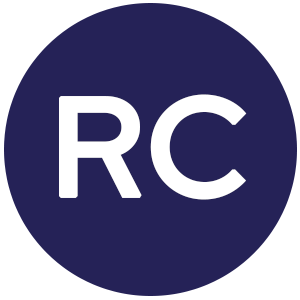According to recent research, most hospitals make equipment purchasing decisions based on anecdotes rather than evidence. After a meta-analysis of papers examining hospital equipment procurement processes, the authors in this 2022 BMJ Open article conclude that “evidence-based management in health care is not yet commonplace.
Healthcare performance consultant Patrick Vega suggests that even among hospitals that do engage in data-driven decision-making, “value analysis teams” can employ varying levels of sophistication. Many VATs “do not have a rigorous evidence-based process for reviewing requests and are more of a ‘rubber stamp,’” he told “The Evidence Forum.” “Those that are more sophisticated are physician-led and use financial, clinical, and operational data to drive those decisions.”
Hospitals that want to increase their use of data can find the prospect daunting, but it doesn’t have to be. They can start by focusing on equipment utilization, which will transform how they think about procurement.
Why Equipment Utilization Matters to a Hospital’s Bottom Line
Utilization refers to the number of pieces of equipment a hospital has in use at any given time. In a perfect world, a hospital’s utilization rate would be high, but not so high that there’s never a piece of equipment available when needed; a seminal report by GE Healthcare suggested 75-80% as the optimal rate. Yet the same report noted that the average equipment rate in American hospitals is only about 42%. As a rudimentary example, if a hospital has 100 infusion pumps, 58 of those pumps sit idle at any given time. That’s a drag on the hospital’s bottom line.
Improving medical equipment utilization requires two steps:
- First, the hospital’s equipment workflow needs to be measured using a real-time location system (RTLS). An RTLS is an asset-tracking solution that will provide visibility into where a hospital’s equipment is located at all times and show where bottlenecks exist in the workflow. Are dirty pieces of equipment sitting idle for too long after use? Are clean pieces of equipment sitting in central sterile for too long before getting returned to clean storage rooms on the hospital’s floors?
- Second, hospitals can use this information to make process changes to optimize the cleaning workflow. Ensuring that equipment makes it through the cycle from bedside to central sterile to clean storage on hospital floors faster means more equipment is available for front-line workers to use.
Once the hospital has optimized its equipment utilization rate through process efficiencies, it knows roughly how many pieces of each class of equipment it needs to meet demand without having too many items sitting idle. In other words, the hospital needs to use the optimized utilization data to “right-size” its inventory.
How to Apply Equipment Utilization Data in a Hospital
So, why aren’t more hospitals using utilization in their equipment procurement decisions? Most aren’t paying attention to it, whether they’ve installed an RTLS or not.
An RTLS is, at its core, is an asset-tracking tool, but when deployed properly, it can also:
- Help hospitals understand what’s happening with their equipment at one point in time (current use) and over time (trends).
- Automate processes (e.g., periodic automated replacement, or PAR) to increase workflow efficiency by better managing soiled and clean storage rooms.
- Provide visibility into a hospital’s excess inventory and how it can be used to its advantage from a supply-chain standpoint.
Each of these benefits can yield hard-dollar savings for a hospital, specifically by avoiding unnecessary purchases. For example, optimizing the cleaning cycle for syringe pumps through PAR may eliminate the need to purchase more when a nurse requests them because the hospital has enough excess inventory in storage to cover the demand. Or say Hospital A in a health system is short on PCA pumps, while Hospital B has identified it has excess PCAs in storage. Hospital B can transfer part of its excess inventory to Hospital A, eliminating a significant expense without affecting clinical care in Hospital B.
Most importantly, though, when someone approaches a hospital’s CFO and says, “We need to buy more sequential compression devices (SCDs),” the CFO must have more than one person’s argument to inform their decision. With the visibility an RTLS can provide, that CFO will have the last three, six, or nine months of SCD utilization data to back up their “yes” or “no.”
Get Up to Speed with the Cognosos RTLS
Are you interested in adding utilization data to your hospital’s equipment procurement process? The Cognosos RTLS’ ultra-lightweight footprint installs quickly and with minimal disruption while delivering room-level accuracy at a fraction of the cost of other systems. Your hospital will have valuable data to optimize your processes and realize savings within months, not years.
To learn more about how Cognosos can help elevate your hospital’s financial decision-making from anecdotes to actionable insights, please contact us today.



